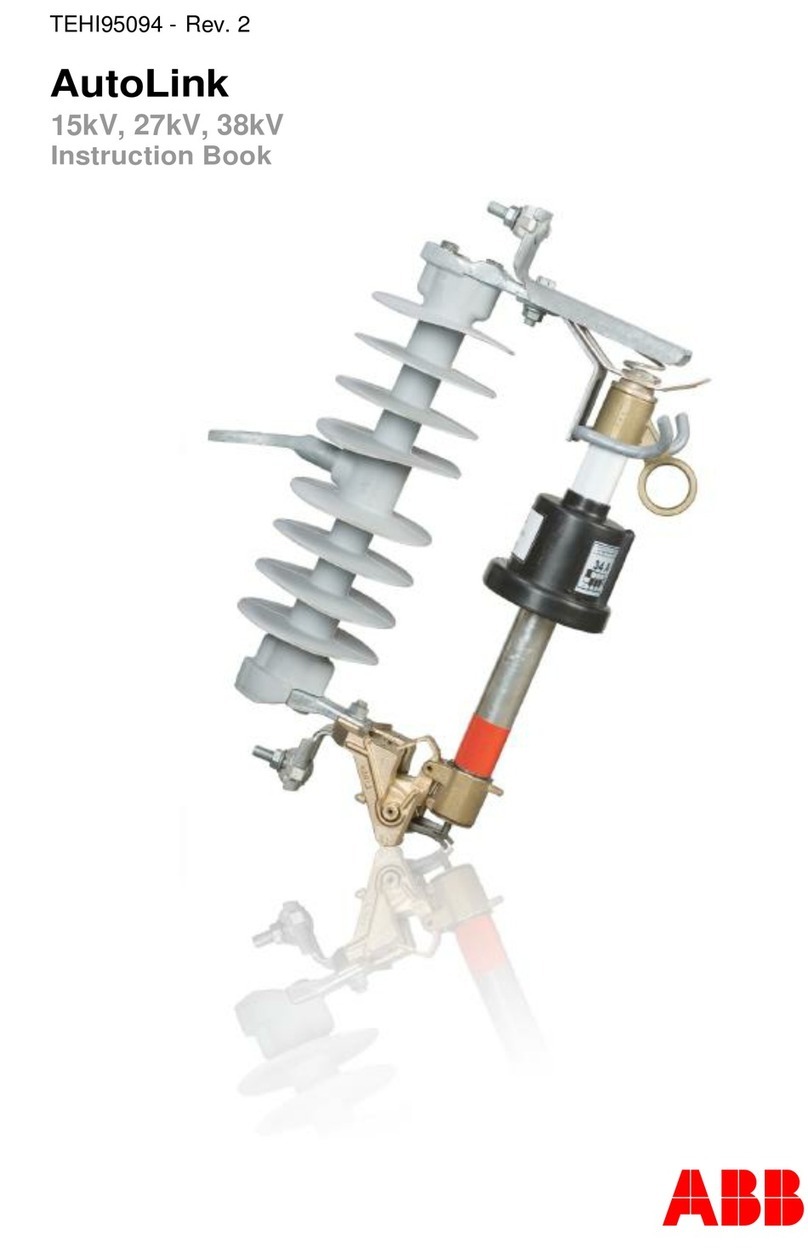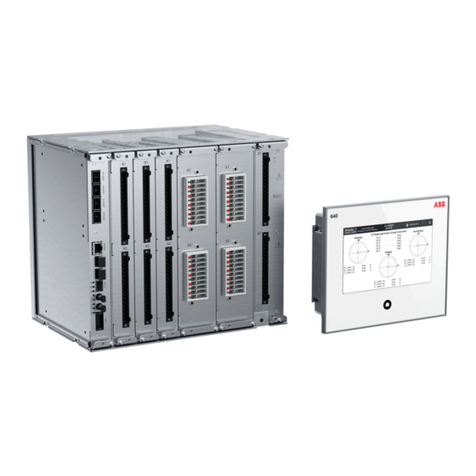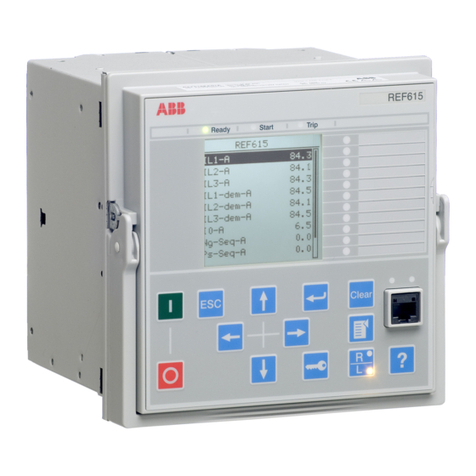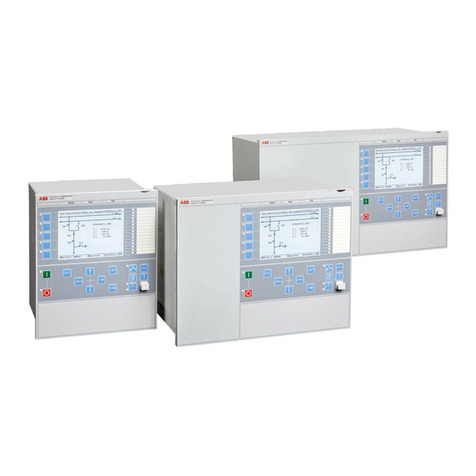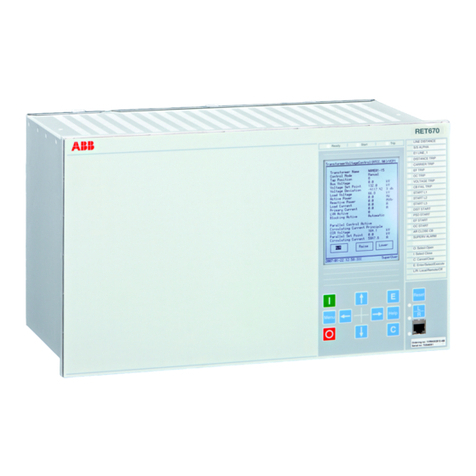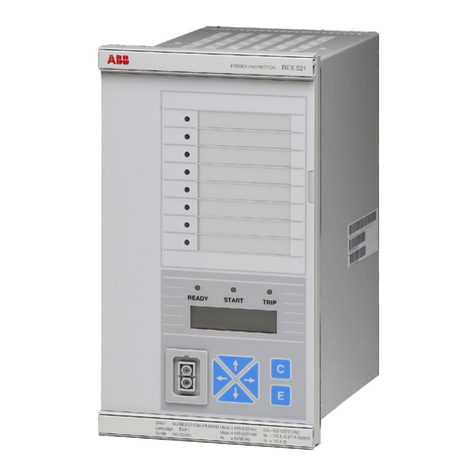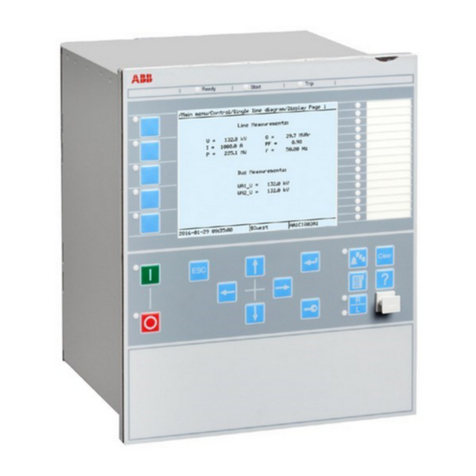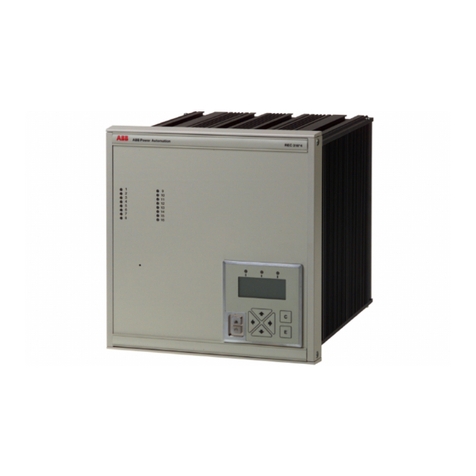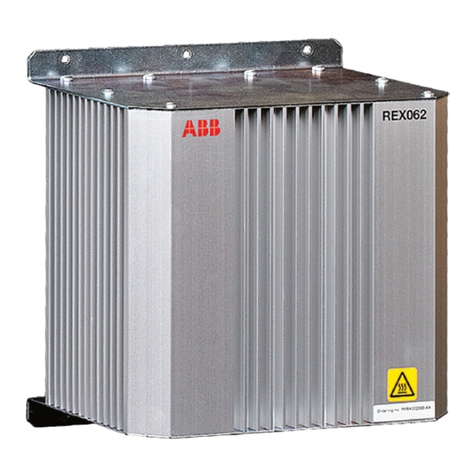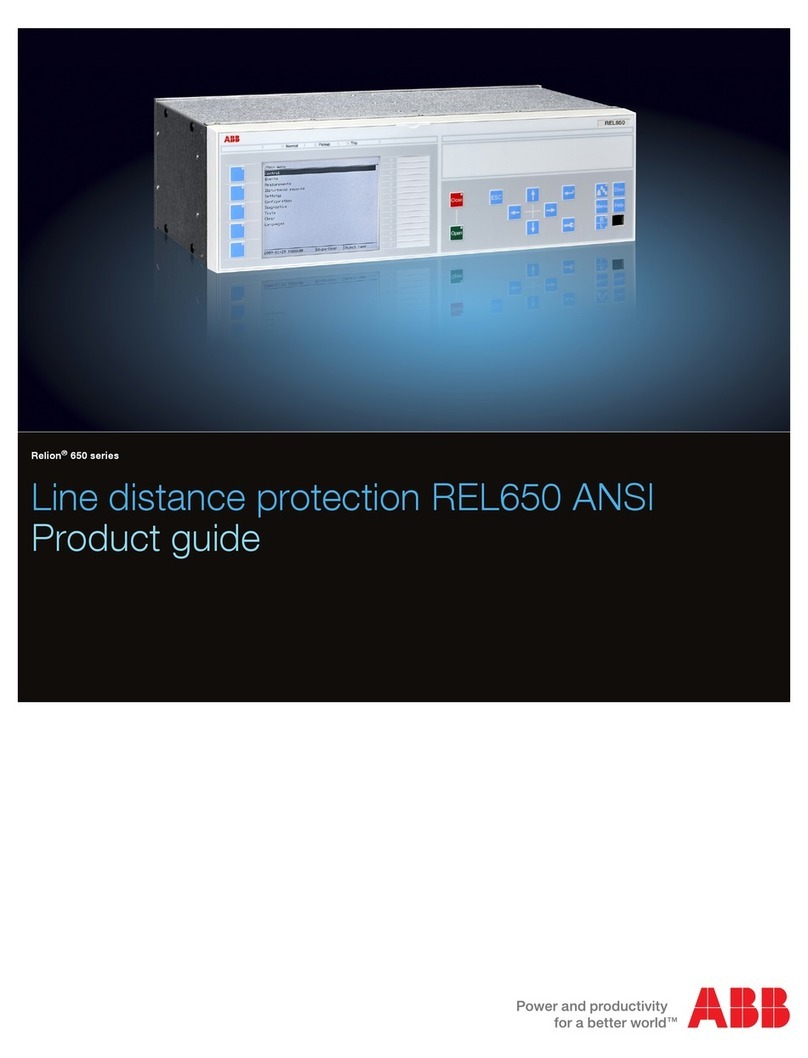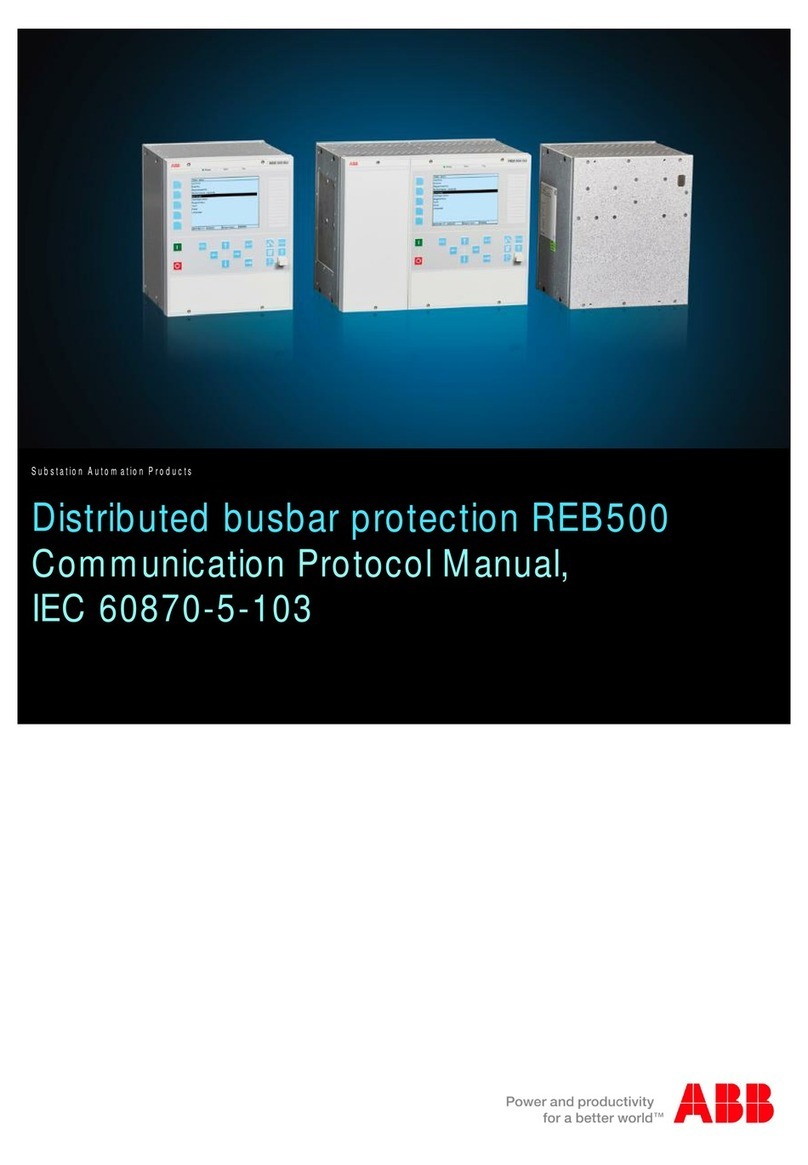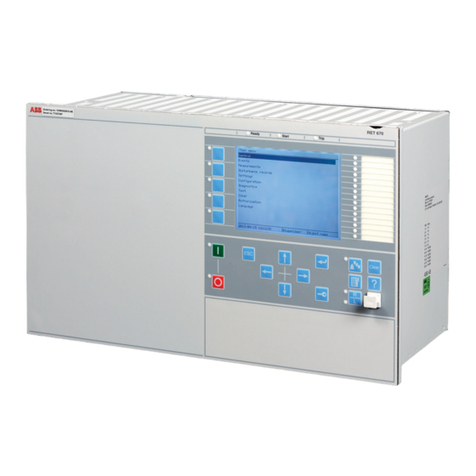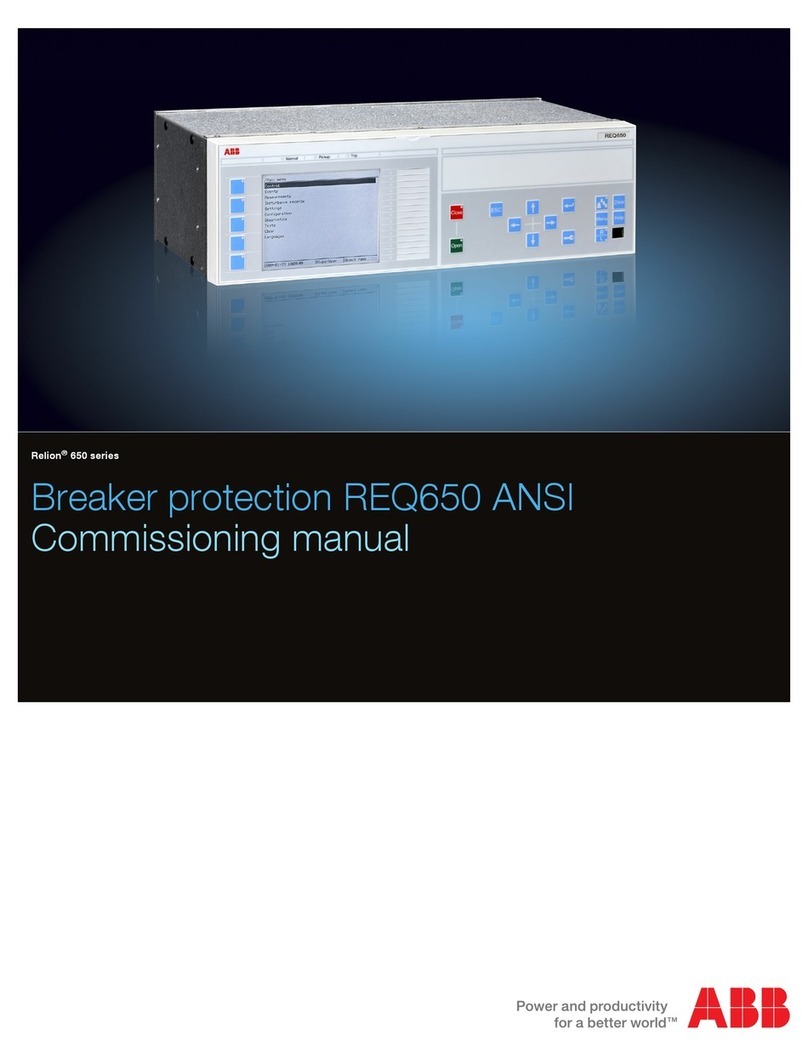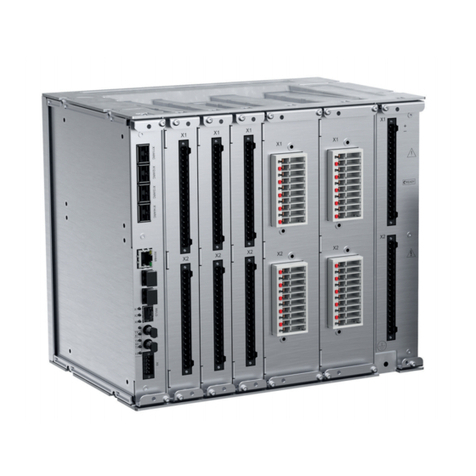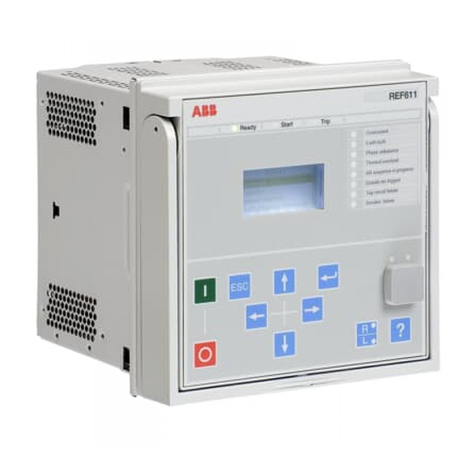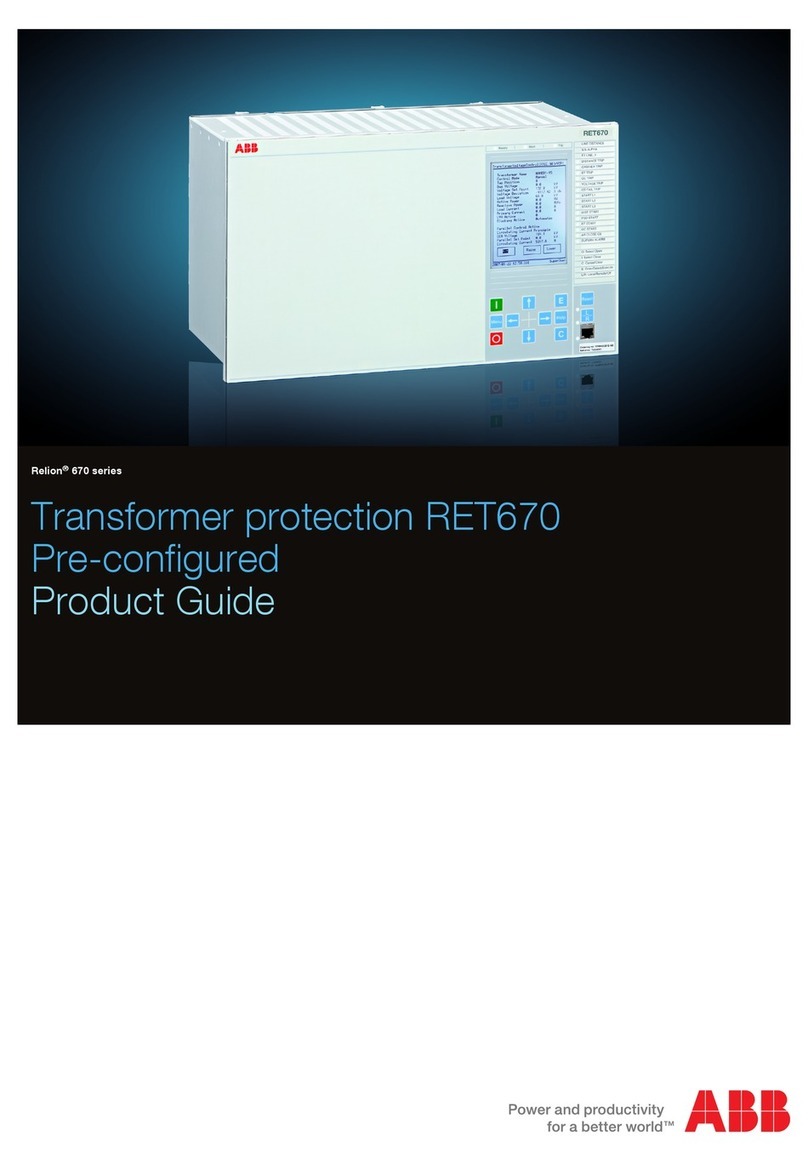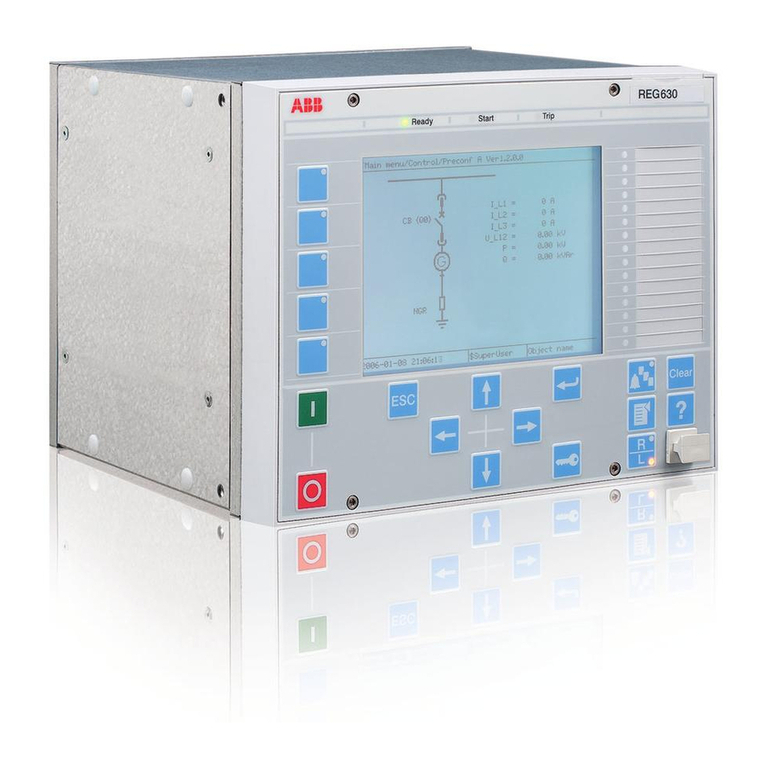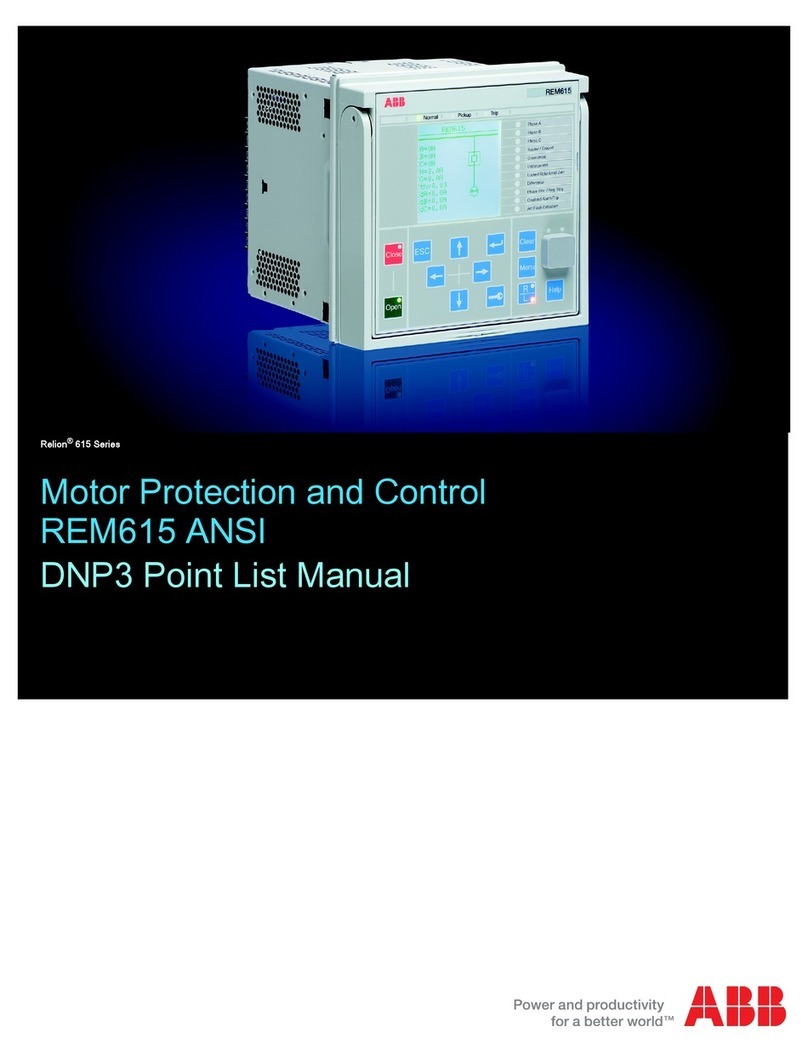
1. 650 series overview GUID-420ACE74-2F34-4991-8DA3-967843F6BFFF v1
The 650 series IEDs provide optimum 'off-the-shelf',
ready-to-use solutions. It is configured with complete
protection functionality and default parameters to meet
the needs of a wide range of applications for generation
transmission and sub-transmission grids.
The 650 series IEDs include:
• Complete ready-made solutions optimized for a wide
range of applications for generation, transmission and
sub-transmission grids.
• Support for user-defined names in the local language
for signal and function engineering.
• Minimized parameter setting based on default values
and ABB's new global base value concept. You only
need to set those parameters specific to your own
application, such as the line data.
• GOOSE messaging for horizontal communication.
• Extended HMI functionality with 15 dynamic three-
color-indication LEDs per page, on up to three pages,
and configurable push-button shortcuts for different
actions.
• Programmable LED text-based labels.
• Settable 1A/5A -rated current inputs.
2. Application M13636-3 v5
REL650 is used for the protection, control and
monitoring of overhead lines and cables in solidly or
impedance earthed networks. The IED can be used up to
the high voltage levels. It is suitable for the protection
of heavily loaded lines and multi-terminal lines where
the requirement for fast three-phase tripping is wanted.
The full scheme distance protection provides protection
of power lines with high sensitivity and low requirement
on remote end communication. The five zones have fully
independent measuring and setting which gives high
flexibility for all types of lines.
The modern technical solution offers fast operating
time of typically 1.5 cycles.
The autoreclose includes priority features for single-
breaker arrangements. It co-operates with the
synchrocheck function with high-speed or delayed
reclosing.
High set instantaneous phase and earth overcurrent,
four step directional or non-directional delayed phase
and earth overcurrent, sensitive earth fault for not
direct earthed systems, thermal overload and two step
under and overvoltage protection are examples of the
available functions allowing the user to fulfill any
application requirement.
The distance and earth fault protection can
communicate with remote end in any teleprotection
communication scheme.
The advanced logic capability, where the user logic is
prepared with a graphical tool, allows special
applications.
Disturbance recording and fault locator are available to
allow independent post-fault analysis after primary
disturbances.
SEMOD51220-5 v6
Three packages has been defined for following
applications:
• Five zone distance protection with quadrilateral
characteristic (A01)
• Five zone distance protection with mho characteristic
(A05)
• Five zone distance protection with quadrilateral
characteristic, single pole tripping (A11)
The packages are configured and ready for direct use.
Analogue and tripping IO has been pre-defined for basic
use.
Add binary I/O as required for the application when
ordering. Other signals need to be applied as required
for each application.
The graphical configuration tool ensures simple and fast
testing and commissioning.
Line distance protection REL650
1MRK 506 328-BEN B
Issued: May 2020
Revision: B
ABB Power Grids 3
© Copyright 2011 ABB Power Grids. All rights reserved
